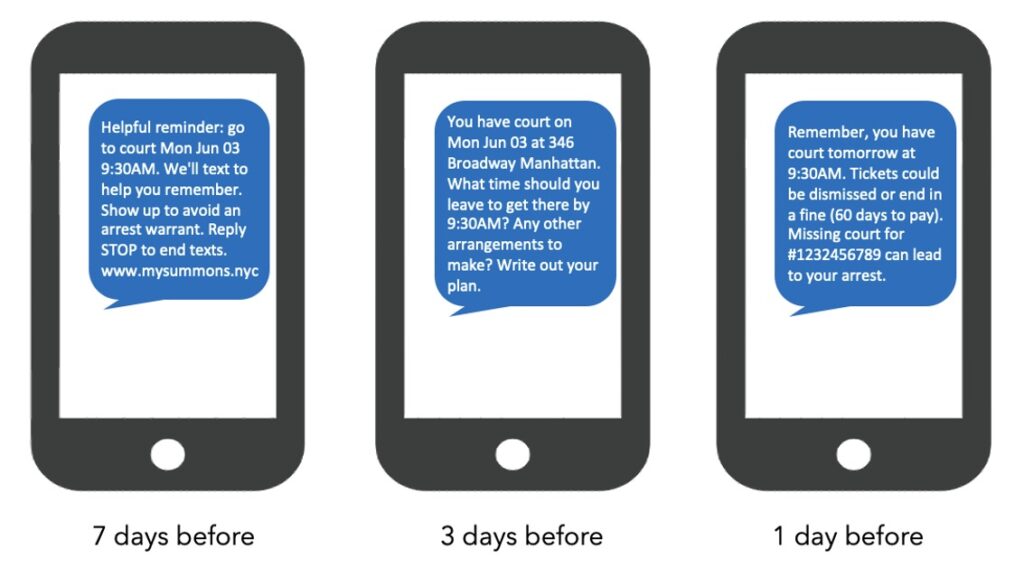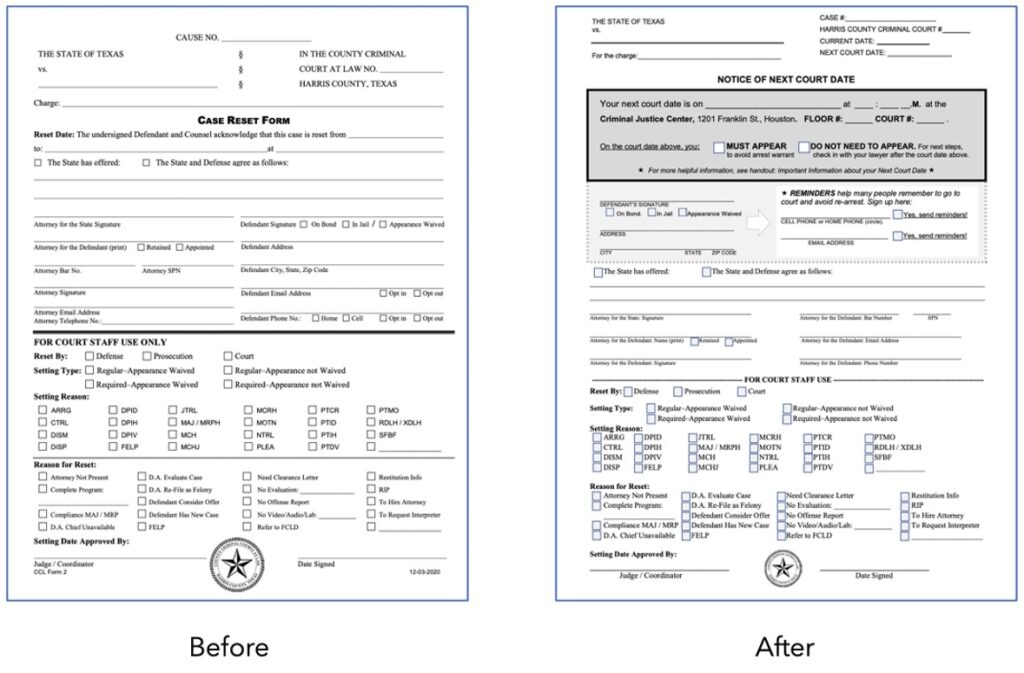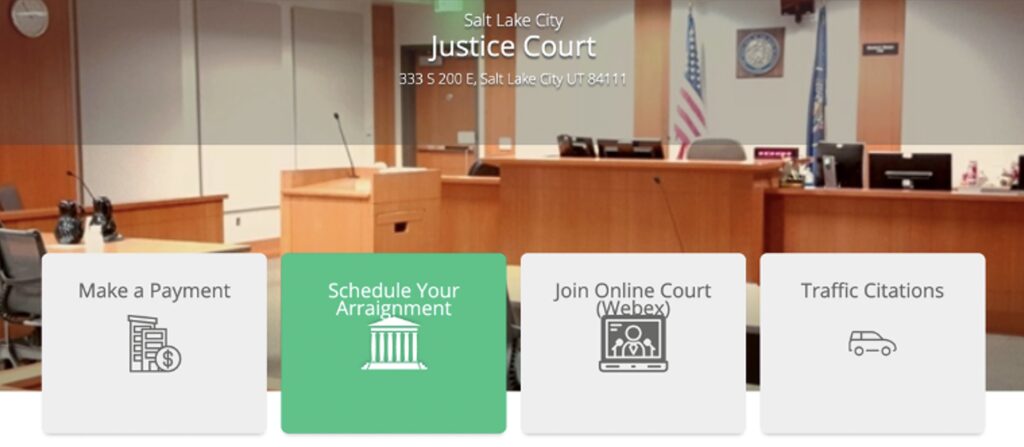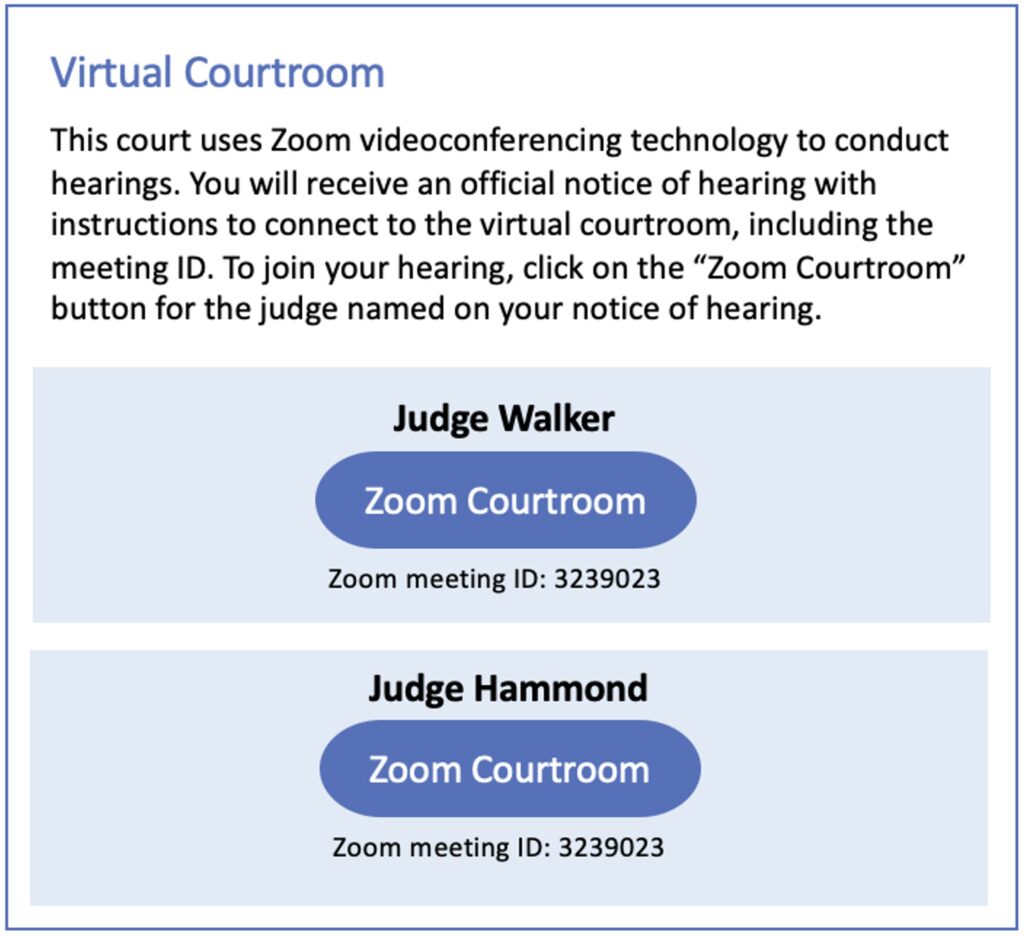Imagine you are a single parent with an upcoming court date. You live far from the courthouse, with no car and no money for either a rideshare or a babysitter, and you have been asking friends to drive you and your months-old baby to court. Finally, one friend says yes—if you can pay her. Not having the cash, you give her your watch.
It’s now the day of your court hearing, and the pick-up time has come and gone, but your friend hasn’t arrived. Your anxiety builds as the minutes tick by, but you don’t call her because she’s doing you a favor, and you don’t want to seem ungrateful by asking her to hurry up. Finally, your friend arrives. After a long crawl through traffic and a fruitless search for affordable parking, you arrive at court long after the hearing time in a panic assuming you’ll have a warrant for missing the court appearance.
Or imagine that you are a few months into the pretrial process, and you have consistently been showing up to court. You’re extremely anxious each time, never sure what the outcome may be. However, more often than not, you get to court and learn that the hearing has been reset. As this process repeats itself, you become frustrated at the amount of hours spent and the stress you’ve endured with seemingly no progress made on your case.
Thankfully, before the next hearing, your lawyer texts you to say that you don’t need to appear, as it will be for an administrative matter. But a few days later, you receive a notice in the mail saying that you missed court. Worried and confused, you take a screenshot of the texts from your lawyer with hopes that the judge will accept it and excuse your absence.
Stories like these, shared by court users in Harris County, Texas, are woefully common. Millions of Americans miss their court dates every year, and nonappearance is the leading cause of jail in some jurisdictions (outnumbering common offenses like DUIs and simple assault).1
The costs of nonappearance to court users are steep (jail, losing stability, housing, jobs), and the costs for the system mount as well. A conservative estimate places the cost to courts of rescheduling upward of $1,000 per missed appearance, adding up to tens of millions of dollars per year coming out of the budgets of state and local governments.2 Missed and rescheduled court dates squander valuable court time, as staff are either idle or pulled away from other duties. They have a downstream effect on future court dockets as well, which forces hearings to be scheduled further and further out. As readers who work in courts can likely attest, it can be astonishing how much court time is wasted each day due to missed appearances. Given the scale of the consequences of nonappearances, it is in everyone’s interest to make it easier for individuals to appear for court hearings as scheduled.
Fortunately, there are solutions that courts around the country have been developing to help individuals meet their court dates. Many of these strategies align with behavioral science research, meaning courts are increasingly building efficient systems around how people actually act, rather than outdated assumptions about how they will. By building off these models, any court can implement more efficient and just systems that give all court users, including those with difficult personal circumstances and less access to resources, the opportunity to participate in their cases without undue hardship.
A New Way of Looking at Nonappearance
If the consequences are steep, why has this problem of nonappearance persisted? In part because the reasons people miss court have not received enough attention.
The most common myth about nonappearance is that people who miss court often do so because they do not think their court dates are important and intentionally skip them. However, mounting evidence points to an entirely different story. Behavioral science, the study of why individuals do what they do, reveals that missed court dates are rarely about intention because individuals regularly go to extraordinary lengths to meet their court obligations. Instead, nonappearance often comes down to factors that they have little control over—bus routes that make it impossible to make it to court early enough, not being able to understand court forms written in legalese, or inflexible work hours that would lead to them losing their sole source of income. These problems are most acute for those individuals with less wealth and fewer resources because they face more challenges when it comes to appearing in court.
It’s not just logistical barriers at play, but behavioral barriers also. The research on psychological effects of scarcity suggests that when individuals don’t have enough of an essential resource, such as money, their minds tend to focus on dealing with that scarcity to the exclusion of everything else. When living in poverty, individuals must continuously use their mental energy to hold on to vital necessities like shelter, food, and safety. This chronic scarcity depletes their ability to focus on anything less immediate. Mentally, this experience is like being up against a tight deadline at work—when we let the mail and laundry pile up as “tomorrow’s problems”—but all day, every day. As a result, individuals dealing with chronic scarcity are more likely to forget court dates, mix up the details of their hearing, have trouble making plans to appear, and feel even greater anxiety over their court obligations.
Another barrier to appearing for court is an overwhelming fear that many individuals feel over their court dates and that they will be thrown in jail for being unable to pay a fine or for some other unforeseen reason. This fear compounds the impact of scarcity and can be paralyzing, particularly when individuals don’t trust that the system will treat them fairly. Expectations about court are colored by prior experiences with the system. For instance, having to wait for hours to appear and then not having an opportunity to speak, feeling coerced into a plea, or simply feeling that they are looked on as a criminal, all of which can be compounded by what they may have heard from family, friends, or even the media.
These behavioral barriers are as real as a lack of transportation or inflexible work schedules, and any one person may be experiencing several of these issues at once.
Responding to nonappearance with warrants, fines, and jail does not solve the main reasons that people miss court. Most people take their court obligations seriously, and courts can improve appearance rates by reducing the obstacles their court users face to showing up.
How Can Courts Effectively and Efficiently Improve Their Appearance Rates?
Court managers need not take a blind leap of faith when adopting practices to improve their appearance rates. Courts are innovating now, and the coauthors from ideas42, a leading nonprofit behavioral science firm, recently published a comprehensive report detailing existing practices for encouraging court appearance. With support from the Pew Charitable Trusts, ideas42 compiled these practices based on an extensive review of the existing research and on input from court actors across the country. The result is a practical guide that a court manager from any state or local criminal court can use to develop a sound strategy for improving appearance rates in their court.
Based on the research, increasing appearance rates comes down to these four goals.
- Make information clear, timely, and accessible: Information about court appearances can be confusing, unclear, or poorly communicated. Design court date communications for the court user, not only the court staff, the lawyers, or the sheriff.
- Reduce logistical challenges: Simplifying the appearance process can make it easier for court users to make their court dates.
- Add flexibility: Offering more appearance options, like flexible scheduling and grace periods for missed court dates, can allow court users to fulfill their court obligations alongside all the other obligations they are managing.
- Provide useful resources for those who need them: Some court users need basic resources like transportation, early representation, and childcare. Courts and system partners can provide meaningful resources to lower these barriers to appearance.
What can courts do now to work toward these goals? Here are four of the leading practices that make it easier for individuals to appear.
Four Smart Ways Courts Are Increasing Appearances
1. Send Court Date Reminders

Example text reminders sent to summon recipients in New York City.
Many people miss court simply because they forget or were never clear on when they were scheduled to appear. Reminders work by making court date information clear and keeping the appearance at the top of an individual’s mind. This method has demonstrated an impact in many courts, increasing appearance rates by 4 to 25 percent.3
Court date reminders provide information about the date, time, and location of their court appearance. Just as our doctor’s offices and hair salons send reminders before appointments, courts can send reminders (by text, phone call, email, or mail) to everyone before they are scheduled to appear. Sending reminders in multiple formats allows courts to reach people in the way that they prefer—which likely makes court users more receptive to the notifications. It also helps courts when there is limited contact information (for instance, people without a fixed address but who have a stable email address, as well as those who only have a home address on file). Reminder messages can leverage behavioral science research by reminding people of the consequences for nonappearance, encouraging individuals to make a plan to get to court, and setting expectations about what will happen at court to reduce fear.
Getting Started with Court Date Reminders
- Consider the types of reminders (text, call, email, or mail) that are most likely to reach your court users. Do you collect current contact information from court users? If not, plan how you may collect it (including before the first court date).
- Explore a reminder system your state already uses (if one exists) or reach out to vendors that can set one up for your court. You can begin by asking your current case management system (CMS) vendor if it is possible to add a reminder component. You may find that reminder capabilities are already built in or easy to add! If reminders are not possible through the existing CMS or you prefer another option, you can consider using an off-the-shelf platform like Twilio to build your own system.
- Look into funding sources to defray the initial costs. Federal grant funding, grants from nonprofit foundations, and cross-agency partnerships may be available to you. You can also shop around with vendors to find the best price (for instance, for text reminders, we’ve seen a range of less than one cent to 36 cents per reminder).
- Design the message content. ideas42 has guidance about creating messages that use behavioral science to make reminders effective and directly helps jurisdictions design impactful reminders.
- Automatically enroll court users in reminders whenever possible, allowing people to opt out if desired (rather than having to do the extra step of signing up to begin). Court users overwhelmingly favor automatic reminders, and courts who do so reach many more people, and it is far more efficient.4
2. Create User-Friendly Court Forms

Original case reset form (before) and behaviorally designed version (after) for Harris County, Texas.
Don’t bury the lead!
Court forms designed for court users can reduce confusion and help them recall the most critical information (what needs to be done, by when, and where). For instance, ideas42 redesigned the New York City summons form using behavioral science insights, and the new forms decreased nonappearance by 13 percent. Redesigning forms can be implemented inexpensively, so courts can start seeing increased efficiency quickly.
Courts can greatly improve their forms with a few simple changes. First, bring the most important information to the top, and make it salient with formatting (bold or color). This includes using a clear title that describes the purpose and required action for the recipient. For example: “Criminal Court Appearance Ticket” or “Agreement to Appear in Court” as opposed to “Summons” or “State vs. Defendant.”
Forms should also clearly describe what the court user can expect: clarify the court user’s rights and what will happen at court (e.g., they can plead guilty or not guilty; they will be given time to pay any fine assessed) and make the consequences of nonappearance clear. Also tell the court user how they can get help if needed. This could be something as simple as providing a phone number for users to call to get their questions answered, a link to the court’s website, and links to helpful resources such as directions and childcare options.
Throughout the form, use plain language and eliminate legalese. Plain language helps court users to find the information they need, understand it, and act on it. Incorporating plain language includes using techniques like shortening sentences and choosing simple and common words, using active (rather than passive) voice, directly addressing the court user as “you,” avoiding writing in all caps, and more. Finally, consider designing the form for accessibility, providing fully translated forms in common languages other than English, and having versions for court users with impaired vision.
Getting Started with More Accessible Forms
- Identify all forms court users will see related to their court dates. Determine which agency “owns” each form and the process needed to revise the contents.
- Take advantage of the guidance that exists. When you’re ready to start redesigning, resources like the National Center for State Courts’ Forms Camp and ideas42’s case studies can provide ideas. ideas42 also offers direct assistance to jurisdictions with updating their forms. For how-to guidance on putting plain-language principles into action, refer to resources like NACM’s Plain Language Guide, which is specifically for courts, and plainlanguage.gov for guidelines, examples, templates, and more. NCSC has a glossary with plain-language alternatives to common legal terms.
- Always user test. Before rolling out new forms, test them by showing them to a few court users to make sure that the changes you have made are helpful.
3. Allow People to (Re)schedule Their Appearances

Option to schedule arraignment on court website, Salt Lake City Justice Court.
Often, court nonappearances are a near miss: a court user is delayed on the bus and makes it to court 20 minutes after the end of the docket; something comes up just before an appearance, like a dead car battery or a sick child; a court date is scheduled during a work shift on a Monday, rather than during their day off on Wednesday.
When these things happen in other spheres of life, like with an appointment with one’s doctor, for instance, the appointment would be rescheduled. But at court, rigid schedules and swiftly issued bench warrants can lead to much larger consequences, such as incarceration or driver’s license suspension.
Existing flexible scheduling practices allow court users with eligible charges (generally, traffic and low-level misdemeanors) to choose a day and time for their appearance during normal docket hours. If court users do not opt to schedule their own date, the court sets the date according to the regular practice. In tandem, courts can offer the ability to reschedule an appearance within certain restrictions (for example, up to two times per case). Courts can make the rescheduling process simple and straightforward by giving individuals the option to schedule online, using a scheduling app, such as Doodle, or by calling the court. Courts should make sure individuals are aware of these options by including instructions on relevant forms (like bond paperwork) and in a prominent place on the website, as well as highlighting the process when informing individuals about their upcoming court date.
Though flexible scheduling options have not been widely studied, there have been promising results. One court found that when they allowed court users to schedule their arraignment on citable charges, appearance rates for those self-schedulers approached an estimated 98 percent. When designed thoughtfully, these options can give court users slack when needed, while helping the court move cases forward with minimal additional administration.
Getting Started with Flexible (Re)scheduling
- Determine which types of hearings and cases will be eligible. For instance, the policy might apply only to hearings for particular matters, like high-volume case types that are often resolved in a single hearing (e.g., traffic infractions).
- Choose (and pilot) a scheduling platform. Off-the-shelf options like Doodle and Calendly may be used for online scheduling.
- Identify how the court will document and manage court-user-requested court dates to ensure that all parties get notified of the correct date.
4. Make Virtual Hearings a Permanent Option

Mockup example of court webpage with easy access to virtual hearings inspired by Kent County, Michigan.
Despite some memorable early snafus (Zoom cat lawyer comes to mind), virtual appearances saved the day in the early months of the COVID-19 pandemic. As courts return to regular operations, they should continue to offer these options, making virtual and telephone appearances part of the new normal.
Virtual appearances make court vastly more accessible for many. They take less time overall, eliminate transportation costs, help people to take less time off work, lessen the need for childcare, reduce fear, and increase court users’ comfort.
The evidence suggests that this translates to markedly fewer missed appearances. While more rigorous studies comparing in-person and virtual appearance rates are still needed, anecdotal evidence from several states indicates that appearance rates are much higher for virtual hearings than for in-person, pre-pandemic hearings. For instance, one jurisdiction reported that when it made appearances virtual from April 2020 through 2022, nonappearance dropped by 68 percent. This translated to the court issuing approximately 1,110 fewer warrants.
At the same time, recognizing that virtual appearances come with their own challenges, courts are continually developing procedures to make virtual hearings inclusive, accessible, and procedurally just. This includes providing ways for attorneys and clients to conference privately during proceedings, assigning a “video bailiff” to conduct tech checks with court users, and providing live remote interpretation. Courts are also responding to the gaps in reliable technology access that impact many in the United States by setting up remote hearing stations in comfortable, accessible locations like libraries and other public spaces.
Getting Started with Virtual Appearances
- Determine which types of hearings are eligible. Generally, simpler and less consequential proceedings can be held remotely. This can include arraignments where incarceration is unlikely.
- Update court user communications so that it’s easy for court users to opt to appear virtually and join the hearing at the appropriate time. Provide step-by-step instructions and links to join the hearing, and share these in multiple places (reminders, the court website, physical appearance forms).
- Set up accommodations and alternatives. Accommodations are not one-size-fits-all; instead, they should be based on court users and context. For example, offer users the option for remote live interpretation, screen reading and closed captioning, remote hearing stations, or borrowable technology.
- Establish workflows to set up successful virtual hearings. Courts will see the biggest gains in efficiency when they have clear systems for performing tech checks, checking in users for their hearing and minimizing wait time, and submitting digital exhibits, along with policies for when tech problems lead to nonappearance.
The Path to Improving Appearance Rates
These four practices can be adapted to work for any court, whether your court serves a large or small jurisdiction, a rural community, or a big city, and there are many other promising practices to choose from. So, where should a court manager start?
To decide where to go, it helps to know where you are. Start by exploring how and why nonappearance happens in your court. Examine your data to understand how common nonappearance is and look for trends that offer clues about important drivers of nonappearance among your court users. (If you don’t have appearance data, make a plan for how your court can begin collecting it, or improve the data you have. Good data are important not only for identifying problems but also for determining what impact your new appearance strategies have.)
In addition to looking at the numbers, get input from people who are closest to the problem—court users themselves, your staff, defenders, and pretrial services officers, for instance. Take a close look at the journey court users go through from citation or arrest to disposition to see if there are communications that can be improved or places where the process can be simplified.
Once you have an idea of the causes, look into the strategies that are available to you. ideas42’s National Guide to Improving Court Appearances features ways that dozens of jurisdictions have begun reducing nonappearance, often in surprisingly low-lift ways. Peer courts and networks, like NACM and Advancing Pretrial Policy and Research, can be a source for new ideas. As always, the most effective interventions are the ones that respond to local needs, so work with partners in your court and your community to select and tailor practices for your court.
Increasing appearance rates can offer an extraordinary return on investment, saving courts millions of dollars in administrative costs. It also creates compounding efficiencies, freeing up staff time from the bureaucratic work of rescheduling. Most profoundly, it moves courts closer to administering justice efficiently and humanely.
And it’s possible. Courts around the country are already implementing proven strategies to help more people appear and are testing out new solutions that work for their unique context. The clear takeaway from this movement is that court nonappearance stalls the wheels of justice, but it’s a challenge we can solve.
Reach out to ideas42 (unwarranted@ideas42.org) if you’d like to learn more or collaborate on implementing some of these strategies.
ABOUT THE AUTHORS
Jeffrey Tsunekawa is the immediate past president of NACM and serves as the director of research and court services for the Texas Office of Court Administration.
Samantha Hammer, Shannon McAuliffe, and Alissa Fishbane lead the Safety and Justice portfolio at ideas42, a nonprofit that uses insights from human behavior—why people do what they do—to help improve lives, build better systems, and drive social change. Through ideas42’s (Un)warranted initiative, they bring proven expertise in reforming court date communications to effectively reduce nonappearance across the country. Learn more at ideas42.org/unwarranted.
- Nonappearance rates vary by jurisdiction, but looking at the example of just one state with a relatively low nonappearance rate demonstrates that nationally nonappearances number in the millions: In North Carolina, roughly one in six hearings are missed, resulting in around 250,000 nonappearances per year. UNC School of Government Criminal Justice Innovation Lab, “North Carolina Court Appearance Project: Findings and Policy Solutions from New Hanover, Orange, and Robeson Counties,” 2022, retrieved from https://live-cjil.pantheonsite.io/wp-content/uploads/2023/07/NC-Court-Appearance-Project-Report-4-22-22.pdf. Data on jail admissions shows nonappearance as a leading cause of jail in multiple places, often ahead of other common offenses. For data by county, see https://jaildatainitiative.org/; additionally, UNC School of Government, 2022, and J. Pierce, M. Bailey, and S. Elbushra, “Rural Washington State Needs Criminal Legal System Reform,” Vera Institute of Justice, 2022, at https://www.vera.org/downloads/publications/rural-washington-state-needs-criminal-legal-system-reform.pdf.
- L. P. Gouldin, “New Perspectives on Pretrial Nonappearance,” in C.S. Scott-Hayward, J. E. Copp, and S. Demuth. (eds.), Handbook on Pretrial Justice (Taylor and Francis, 2021), pp. 296-323.
- C. T. Lowenkamp, A. M. Holsinger, and T. Dierks, “Assessing the Effects of Court Date Notifications Within Pretrial Case Processing,” American Journal of Criminal Justice 43 (2018): 170, at https://link.springer.com/article/10.1007/s12103-017-9393-7.
- For instance, 97 percent of court users interviewed for recent research in Illinois said that they would agree to being automatically enrolled in the court’s reminder system. S. Magnuson et al., “Understanding Court Absence and Reframing ‘Failure to Appear’: Lake County, IL,” Justice System Partners, 2023, at https://justicesystempartners.org/wp-content/uploads/2023/05/SJC-Lake-County-Getting-to-Court-as-Scheduled-Reframing-Failure-to-Appear.pdf.



